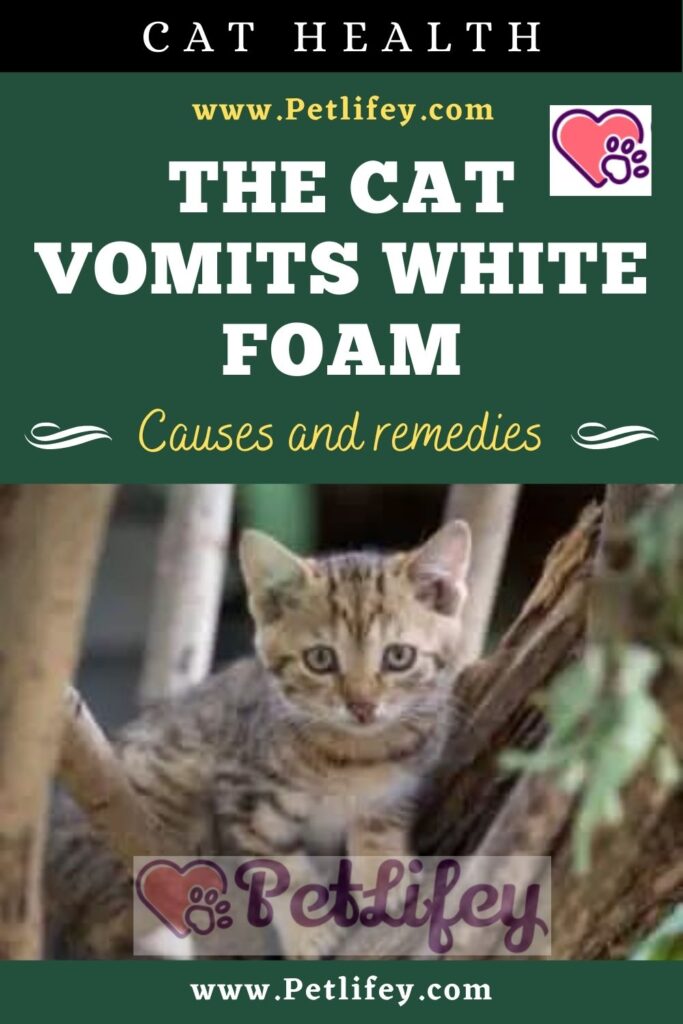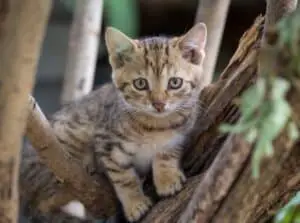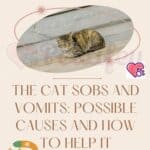
Is your cat sick and vomiting whitish foam? Here’s what could be causing it and how to help it heal.
If the cat is sick and sends us obvious signals, such as a white and foamy discharge coming out of the muzzle, it is important to understand what may be the cause of this discomfort. Based on the triggering reason, the most suitable remedy can be found to heal it. Here is a series of useful tips to help our cat get better in the shortest possible time.
Is this normal or should you worry?
Some argue that the white discharge that a cat rejects is one of its most common attitudes. It seems natural to us when the cat vomits hairballs, but the speech changes if the white foam from the mouth is accompanied by other much more annoying symptoms, such as gastro-intestinal disorders. Once the cause of his discomfort has been ascertained, it will be easier which measure to take to cure him.
The cat vomits white: possible causes
If the secretion escapes from the muzzle, our attention must focus on the gastro-intestinal system of the animal. There may be several reasons and below we will see one by one the most probable causes of this malaise.
Gastritis
It is an inflammation of the stomach and involves several symptoms associated with vomiting, namely: loss of appetite, high temperature and nausea. It is possible to identify it by paying attention to various details such as soft stools, intestinal noises and grumbling, dull hair but also an unusual hunger. It could occur when our cat eats grass or some food that can be toxic. Better talk to your trusted vet.
Inflammatory diseases
Also in the intestinal tract an accumulation of grain could occur: this affects the digestive system of the animal. It is one of the reasons why many owners choose grain-free food. The most common symptoms are diarrhea and vomiting: when these episodes become chronic they could lead you to think that they are completely normal. But a visit to the veterinarian is always recommended, who will be able to clarify any doubts and possibly intervene.
He ingested foreign bodies
Not only objects that obstruct the airways, but hairballs can also be dangerous. Even small objects or hair residues that will form the boluses can easily irritate the intestinal walls. We always pay attention to the moulting of the hair and we study how to take care of the cat’s hair.
Panleukopenia
Usually unvaccinated cats in their first year of life may exhibit symptoms of this disease caused by feline parvovirus. There are no specific treatments to treat panleukopenia, which involves vomiting, often with blood, and diarrhea. Although there are only palliative remedies, the expert can help us choose the one that best suits our specific case.
Less frequent causes
Among the less frequent, but not impossible causes, we find diseases related to the pancreas, kidneys and liver. Let’s look at them in detail.
Pancreatitis
It is a pathology that affects the regular functioning of the pancreas: it may no longer produce enzymes that are essential for digestion, or it may not produce hormones to be introduced into the blood. In any case, if not treated in time, it can lead to death: in this regard it is counted among the most dangerous diseases for cats.
Diabetes
If your cat’s body is unable to produce enough insulin, glucose can build up in the blood. This excess of sugar in the lymphatic system leads to diabetes: an affected cat eats and drinks more than usual. Another sign of obvious discomfort due to diabetes is the loss of shine in the coat.
Kidney failure
When the kidneys stop working properly, the cat is likely to feel the need to drink more. His urine may also change color and in general the cat may seem more apathetic and thin.
Hepatic insufficiency
If the liver is responsible for vomiting, we may notice a general yellowing of the cat’s body, known as jaundice. Both the skin and the secretions could take on a yellowish color: it will be good to intervene promptly with a visit to the vet.
Hyperthyroidism
In older cats, i.e. over ten years of age, the cat’s thyroid gland may start to give problems. As a result you will notice: weight loss, vomiting and diarrhea. Precisely because the cat is dehydrated, it will need to drink and eat more than usual.
Parasites
Kittens in particular can be victims of internal parasites: for an effective deworming we recommend, on the advice of the doctor, a specific wormer.
The cat vomits white foam: remedies

If the episode of vomiting occurs only once, there is no need to be alarmed: it could return to normality and not be symptomatic of a more serious pathology. Here are other tips to prevent and treat ailments related to white foam vomit.
Veterinarian: the best solution
For any doubt or problem it is always advisable to talk to your trusted veterinarian. Thanks to his experience and ability he will be able to take care of our cat and also, not an easy task, to reassure his apprehensive owner.
Healthy nutrition
Pay attention to what our cat eats: we do not only mean the objects that it could ingest but also a particular care for the feline’s diet. It is essential that it is not too rich in wheat, difficult to digest and other foods forbidden for cats. Better to rely on the high quality croquettes that can be found in pet shops: so you are not mistaken!
Coat care
Brushing the cat’s fur and removing the part of the coat that falls off during the moult is an excellent solution to prevent the formation of hairballs in his intestine. Washing and brushing, in addition to being a preventive action, is also a moment of relaxation that we must grant to us and to our cat.






